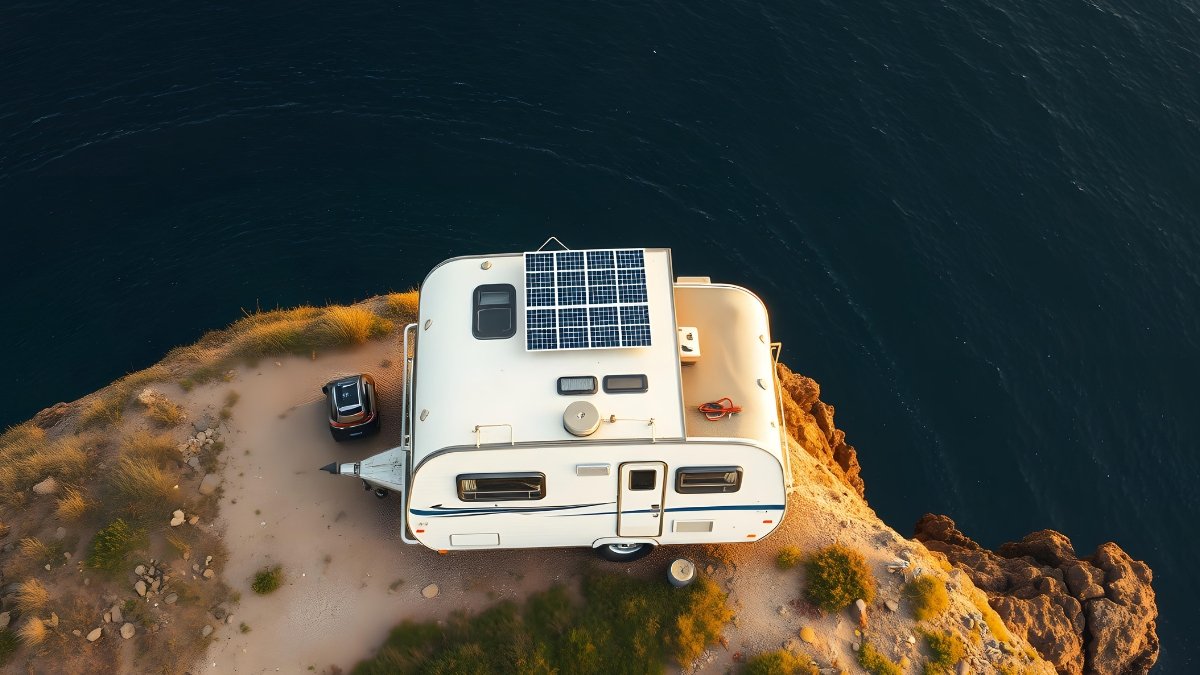You want that peaceful camping experience. However, choosing the right RV solar power setup can feel overwhelming. You see systems ranging from $1,500 to $15,000 and wonder which one is the best.
Most RV owners make expensive mistakes. They buy undersized systems that can’t power their coffee maker. Or they overspend on massive setups they’ll never fully use. Both choices waste your money and leave you frustrated.
Solar companies push one-size-fits-all solutions. They don’t care if you’re a weekend warrior or a full-time nomad. They just want to sell you something.
Each setup includes the actual equipment you need, solar installation cost breakdowns, and who should buy each system. No more guessing. No more overpaying. Just the right solar setup for your actual camping style.
10 Solar Power Setups That Will Make Your RV Completely Off-Grid
Setup 1: Weekend Warrior Basic Kit (100-200W) $1,200-$1,800
You camp twice a month. Your phone dies by day two. The RV lights drain your battery fast. You need power, but don’t want to spend thousands.
i. Basic RV Kit
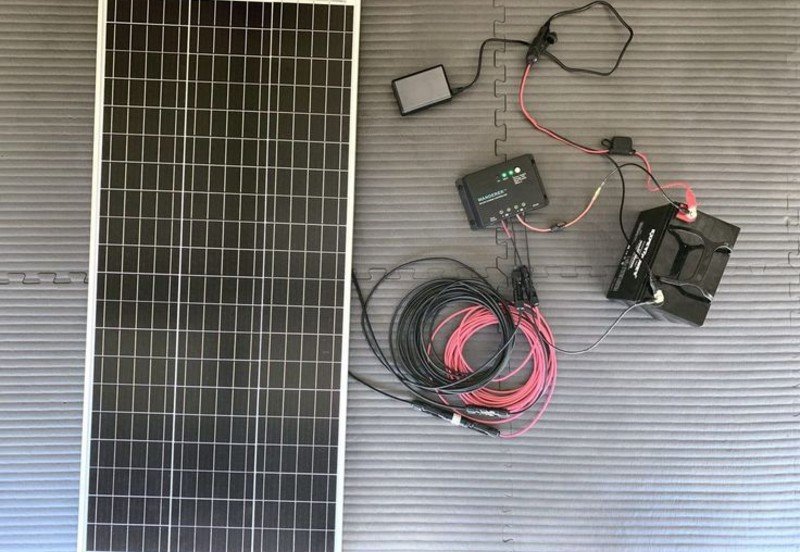
This basic RV solar kit solves your weekend power problems. It keeps the lights on, phones charged, and the water pump running. You can camp for 2-3 days without hookups or generators. What You’re Buying
Solar Panels: Two 100-watt panels cost around $400 total. You can mount them on your roof or set them up as portable panels on the ground. Ground setup gives you more sun but takes up space.
Battery Bank: A 200Ah AGM battery costs about $700. This stores power for nighttime use. AGM batteries need less care than old lead-acid types but cost more than basic batteries.
Charge Controller: A PWM controller costs $80-120. This prevents your battery from getting damaged by too much power from the panels.
ii. Real-World Power Numbers
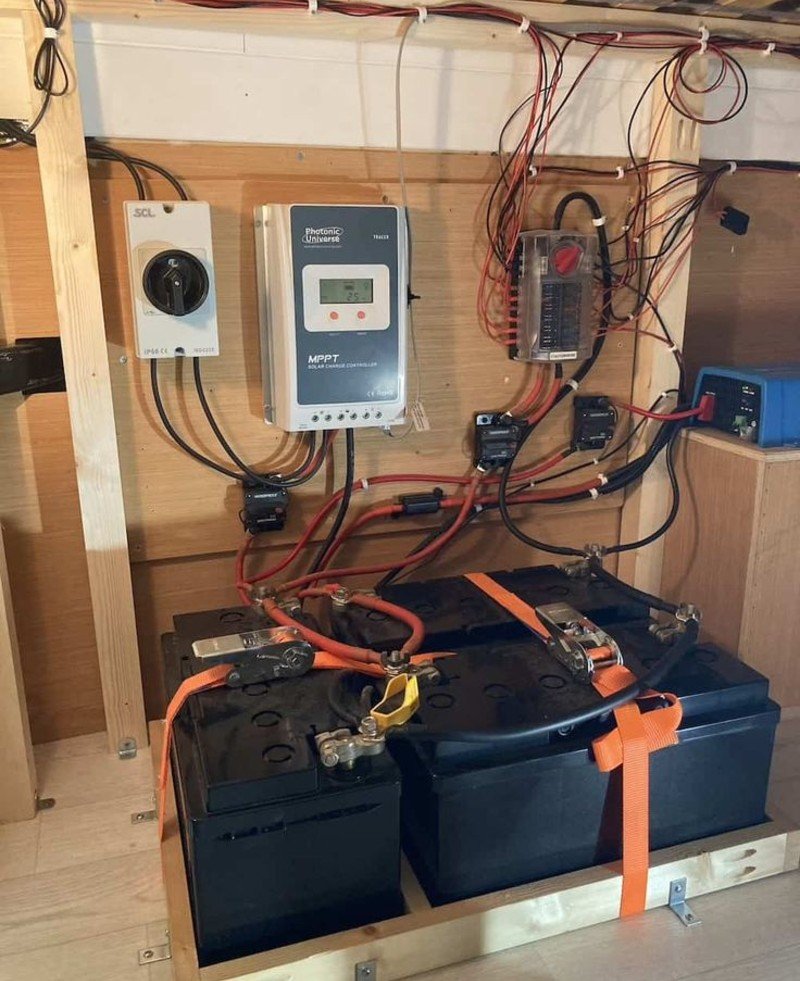
Your 200 watts of solar makes about 800 watt-hours on a good day. That runs LED lights for 8 hours, charges two phones, and keeps your water pump working. You won’t run a microwave or TV all day.
iii. Two Installation Choices
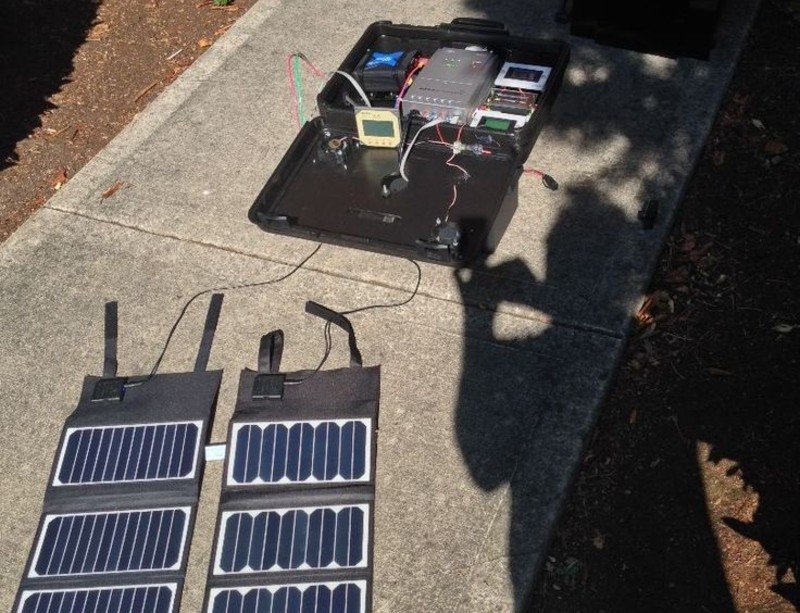
A portable setup costs less up front. You set up panels when you park and store them when you drive. Roof mounting costs more but works while you drive and takes no setup time.
This basic RV solar kit works best if you camp on weekends, use mostly LED lights, and don’t need to run big appliances. It’s an honest starter power that grows with your needs.
Setup 2: Digital Nomad Essential (400W) $2,500-$3,500
Your boss expects you online by 9 AM. Your laptop dies during important video calls. Your internet hotspot runs out of juice when you need it most. Working from your RV shouldn’t mean fighting for power.
This digital nomad RV solar system keeps your office running smoothly. You can work 8 hours a day, charge multiple devices, and still have power for basic RV needs. No more hunting for coffee shops with outlets.
i. Power for Your Mobile Office
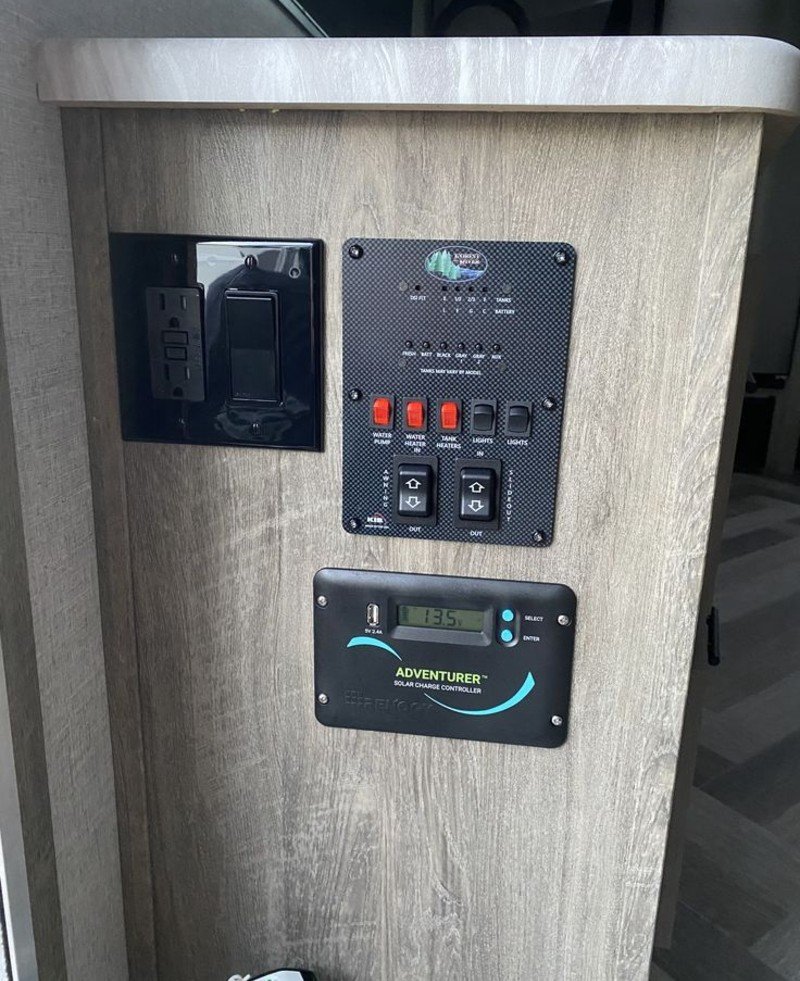
Your 400-watt setup makes about 1,600 watt-hours on a sunny day. That runs a laptop for 8 hours, charges phones and tablets, powers a mobile hotspot, and keeps LED lights on. You can even run a small TV after work. What You’re Buying
Solar Panels: Four 100-watt panels cost $800-1,000. Mount them on your van roof or use flexible panels that bend with curved roofs.
MPPT Charge Controller: This smart controller costs $200-300. It squeezes 30% more power from your panels than cheaper PWM controllers. That extra power keeps you working longer.
Lithium Battery Bank: A 400Ah lithium battery costs $1,800-2,200. Lithium charges faster than lead-acid and weighs half as much. Your van needs the weight savings.
Setup 3: Family Comfort System (600W) $4,000-$6,000
The kids want to watch movies. Your wife needs the fridge running. Dad wants his coffee maker. Everyone’s fighting over phone chargers. Family camping shouldn’t feel like power rationing.
This family RV solar system keeps everyone happy for 3-4 days without hookups. You get cold food, hot coffee, entertainment, and charged devices. It’s the sweet spot between basic camping and luxury power.
i. Power Budget That Works for Families
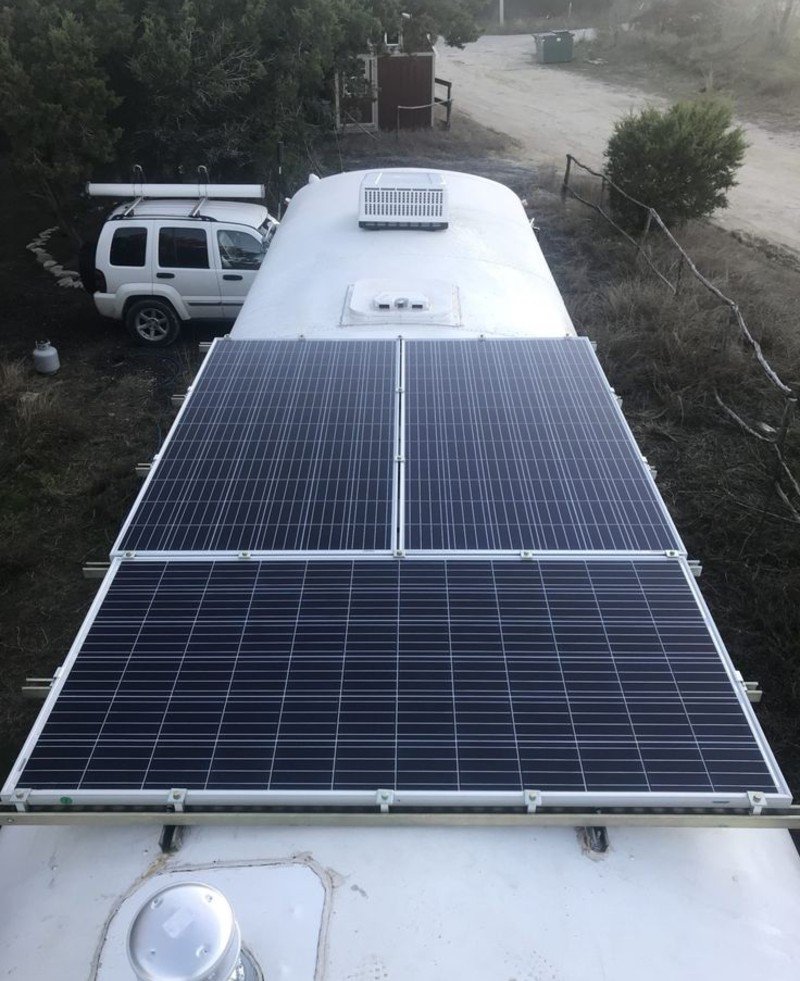
Your 600 watts make about 2,400 watt-hours on a good day. Here’s how a family of four uses that power:
i. RV refrigerator: 600 watt-hours per day
ii. LED lights (6 hours): 300 watt-hours
iii. TV and streaming (4 hours): 400 watt-hours
iv. Phone and tablet charging: 200 watt-hours
v. Water pump and fans: 300 watt-hours
vi. Coffee maker (30 minutes): 600 watt-hours
Total: 2,400 watt-hours. That matches what your panels make on sunny days. What You’re Buying
Solar Panels: Six 100-watt panels cost $1,200-1,500. You need professional installation on most family RVs. These panels are bigger than van setups.
Advanced MPPT Controller: A 60-amp MPPT controller costs $400-600. It handles your six panels and squeezes maximum power from partial shade.
Lithium Battery Bank: A 600Ah lithium system costs $2,400-3,000. This stores two full days of power for cloudy weather. Lithium charges fast so your panels refill it quickly.
Professional Installation: Budget $800-1,200 for mounting and wiring. Family RVs have complex electrical systems that need expert work.
ii. Smart Backup Plan
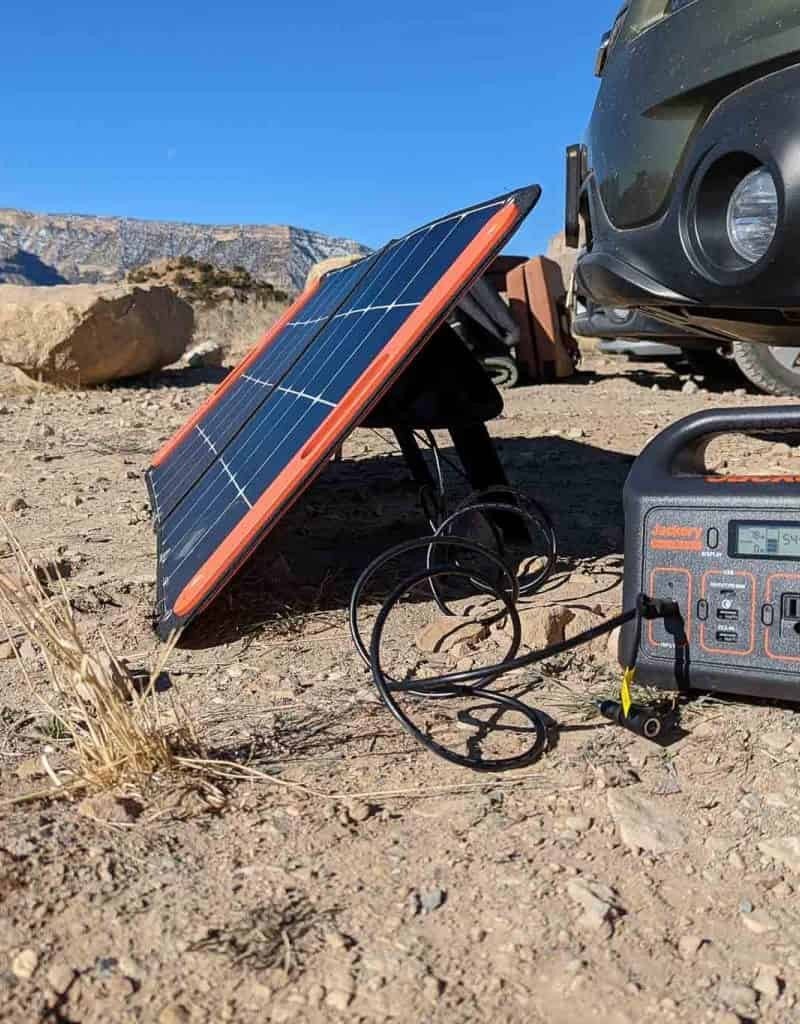
Your 600W RV solar system covers 80% of your power needs. Keep a small 2000-watt generator for cloudy days or high-demand times. Run it for 2-3 hours to top off batteries.
This hybrid approach costs less than going full solar. You get quiet operation most of the time, with backup power when you need it.
iii. Best Fit for Your Family
This family RV solar setup works if you camp 4-7 days at a time and want normal home comforts. It won’t run air conditioning all day, but it handles everything else your family needs.
Setup 4: EcoFlow Power Kit All-in-One (2400W) $8,000-$12,000
You bought a big Class A motorhome. You want to run everything like you’re plugged in at home. Your current 12V system gets hot, wastes power, and needs a dozen different parts that don’t work well together. You need serious power that works.
The EcoFlow Power Kit solves big RV power problems with one smart system. It runs air conditioning, microwaves, washers, and everything else without the heat and power loss of old 12V setups. This is plug-and-play power for people who want it done right.
i. Why 48V Changes Everything
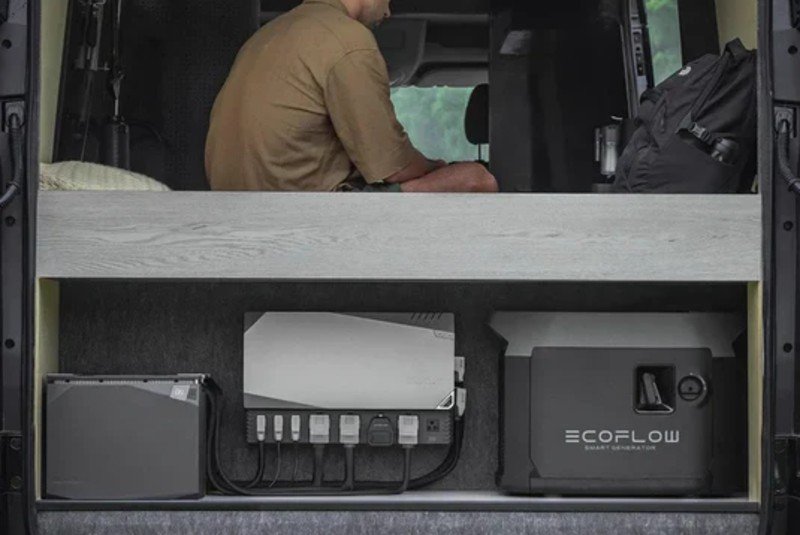
Most RV solar runs on 12 volts. That pushes lots of current through wires, which makes heat and wastes power. EcoFlow’s 48V system makes the same power but uses only one-fourth the current. Less current means cooler wires, less power loss, and better performance.
Your 2400-watt system stays efficient even with long wire runs to your bedroom outlets. Old 12V systems lose 10-20% of their power as heat. This 48V system loses almost nothing.
ii. All-in-One Smart Design
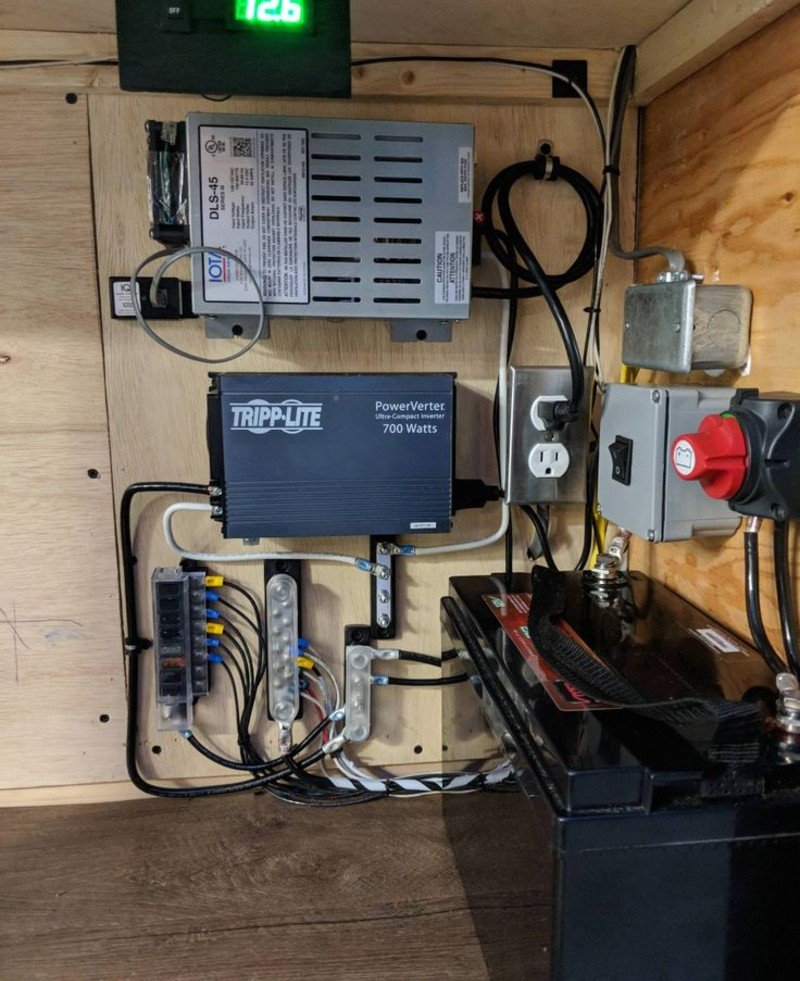
Traditional RV solar needs five separate boxes: charge controller, inverter, battery charger, converter, and monitoring. EcoFlow puts all that in one Power Hub. Fewer parts mean fewer problems and faster installation.
Your Power Hub handles 3,600 watts of AC output. It includes two solar charge controllers that can take up to 4,800 watts of solar panels across three different roof sections. You can add rigid panels, flexible panels, or portable panels all at once.
iii. Battery System That Grows
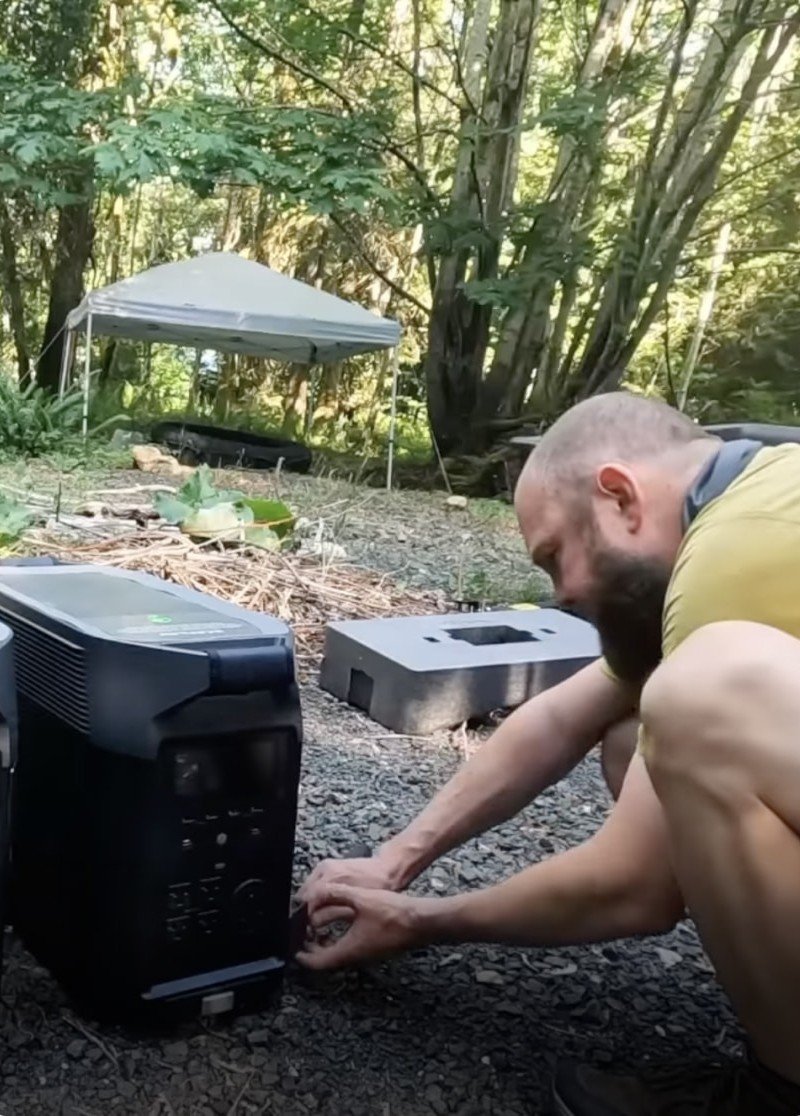
EcoFlow batteries stack like building blocks. Start with 5kWh and stack up to 15kWh total. Each battery locks in securely and connects automatically. No complicated wiring between battery banks.
The batteries fit under RV seats or in closets. They’re half the size of old lead-acid batteries but store three times more power.
iv. Smart Control from Your Phone
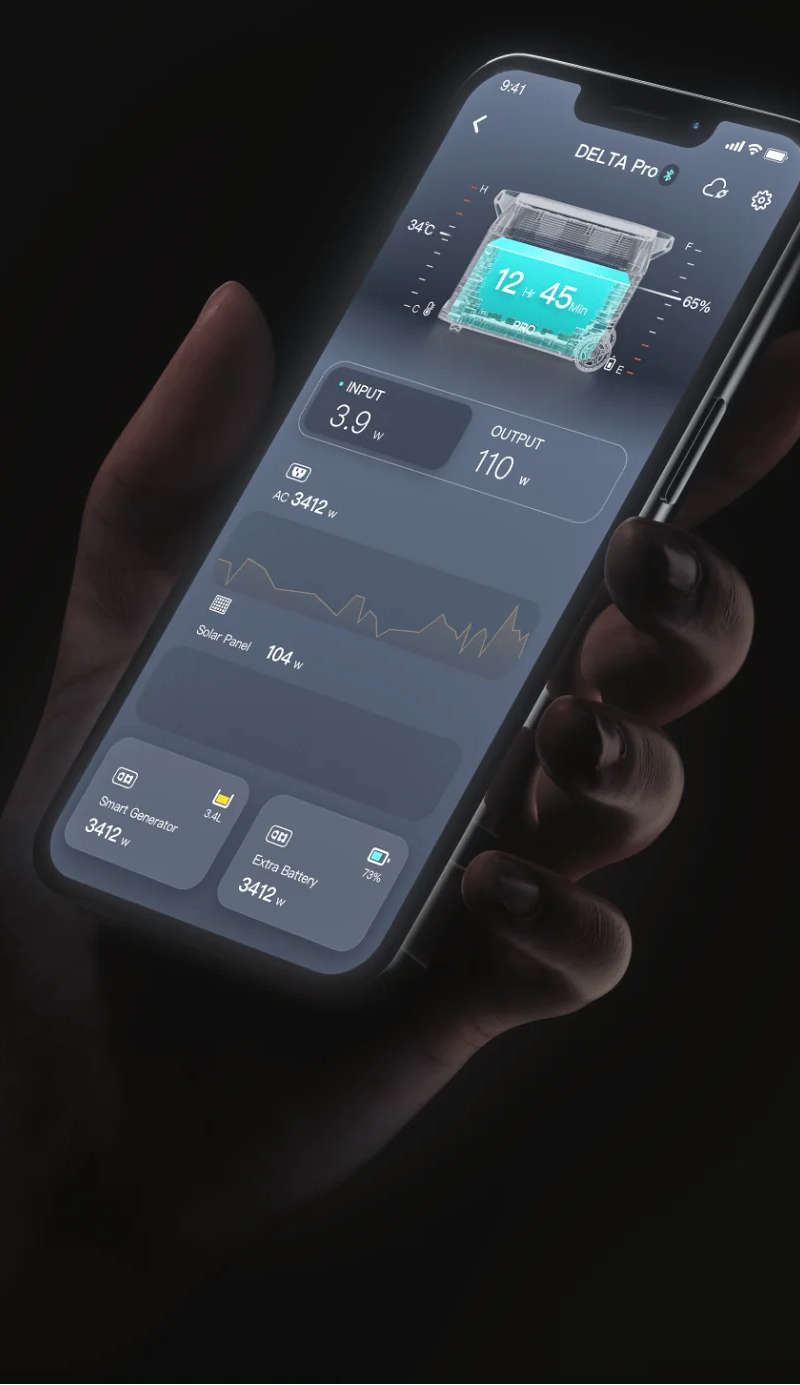
The EcoFlow app shows real-time power use, battery levels, and solar production. You can turn circuits on and off remotely and get alerts when something needs attention.
This EcoFlow Power Kit works best if you have a large RV, want to run major appliances, and prefer one premium system over cobbling together cheaper parts.
Setup 5: Boondocking Beast (800W) – $6,000-$9,000
You live in your RV full-time. You want to run your coffee maker, microwave, computer, TV, and everything else without thinking about power. You’re tired of rationing electricity like you’re camping in 1985. You want your RV to feel like home.
This boondocking solar system gives you nearly unlimited power for everything except air conditioning. You can cook, work, watch TV, and live normally for weeks without hookups. It’s the minimum setup for serious full-time RVers who refuse to compromise.
i. Power That Matches Your Lifestyle
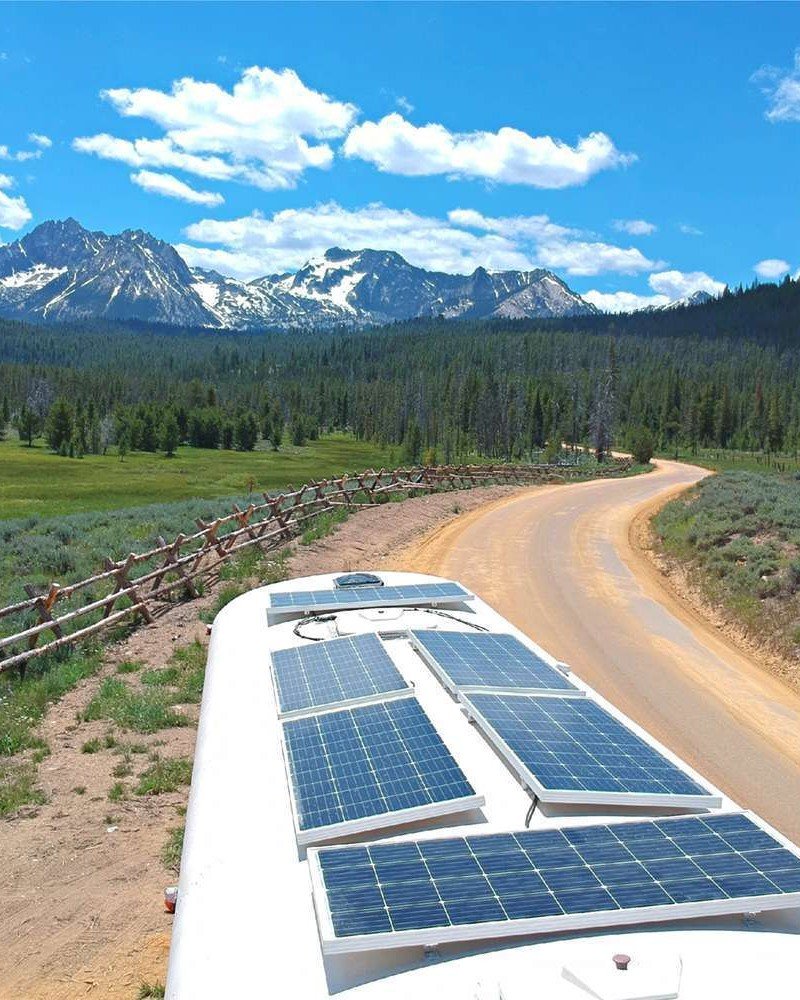
Your 800 watts make 3,200 watt-hours on sunny days. That’s enough for:
i. Full-size refrigerator running 24/7
ii. Microwave use 3 times per day
iii. Coffee maker every morning
iv. TV and entertainment system for 6 hours
v. Computer work for 8 hours
vi. All LED lights and the water pump
vii. Phone and device charging for the whole family
You can run all of this at the same time without watching your battery meter. You’re Building
Solar Array: Eight 100-watt panels cost $1,600-2,000. Mount them across your entire roof for maximum power collection. You’ll need every square foot of roof space.
Dual MPPT Controllers: Two 40-amp controllers cost $600-800 total. Split your panels between two controllers so shade on one section doesn’t kill your whole system.
Massive Battery Bank: An 800Ah lithium system costs $3,200-4,000. This stores 2.5 days of power for cloudy weather. Full-timers need this much storage or they’ll run generators constantly.
Advanced Battery Management: A good battery monitor costs $200-400. It shows exactly how much power you’re using and making in real-time.
ii. Smart Generator Backup
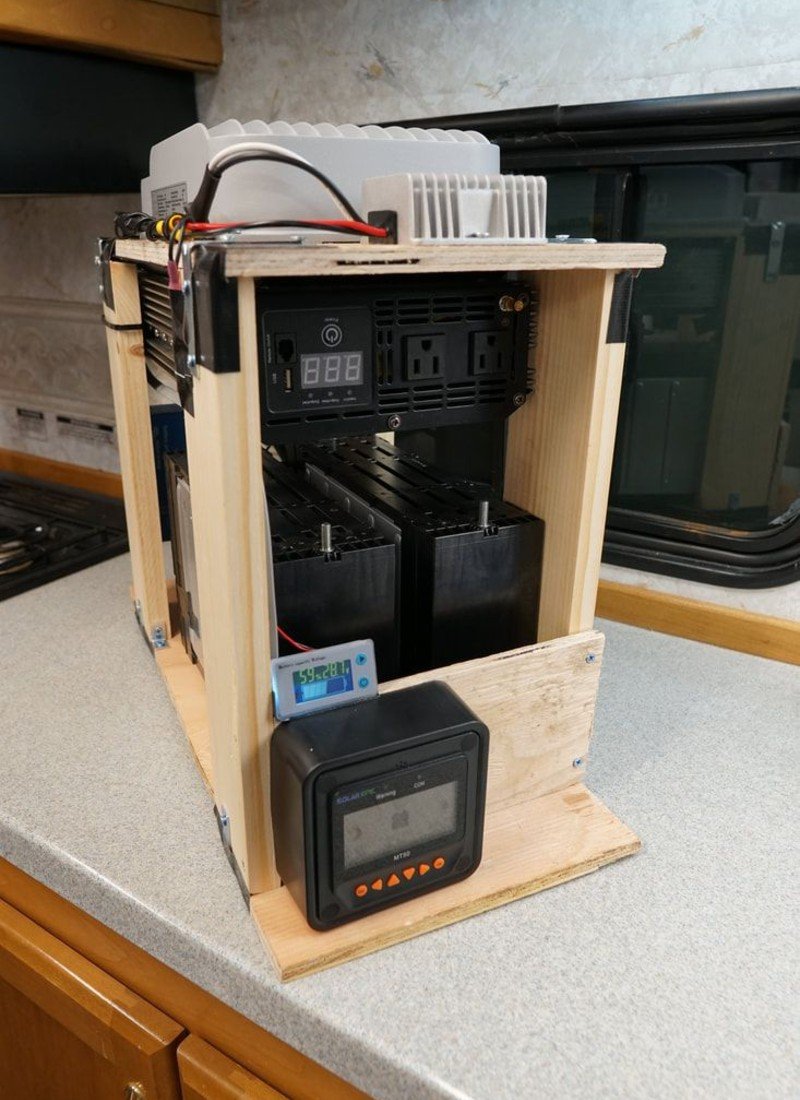
Even 800 watts can’t handle everything. Wire a 3000-watt generator to auto-start when batteries hit 30%. It runs for 2-3 hours to recharge, then shuts off automatically.
This hybrid setup gives you quiet solar power 90% of the time with generator backup for heavy loads or bad weather.
iii. Professional Installation Required
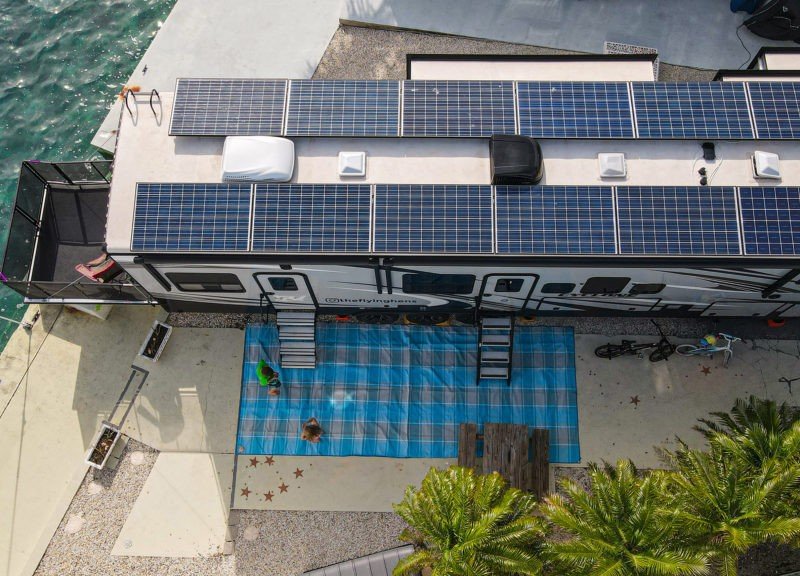
This system needs expert installation. Budget $1,000-1,500 for mounting, wiring, and system setup. Full-time systems are complex and need to work perfectly.
This boondocking beast works best if you live in your RV year-round and want all the power conveniences of home without compromise.
Setup 6: Climate Control Capable (1200W) – $10,000-$15,000
You’re camping in Arizona in July. It’s 115°F outside. Your RV feels like an oven. You want air conditioning but hate running your generator 12 hours a day. Every campground with hookups is full, and you’re stuck sweating in your expensive RV.
This climate control solar system lets you run efficient mini-split air conditioning on mostly solar power. You can stay cool in hot climates without being a generator slave. It’s expensive but gives you true comfort and freedom in any weather.
i. Why Air Conditioning Eats Power
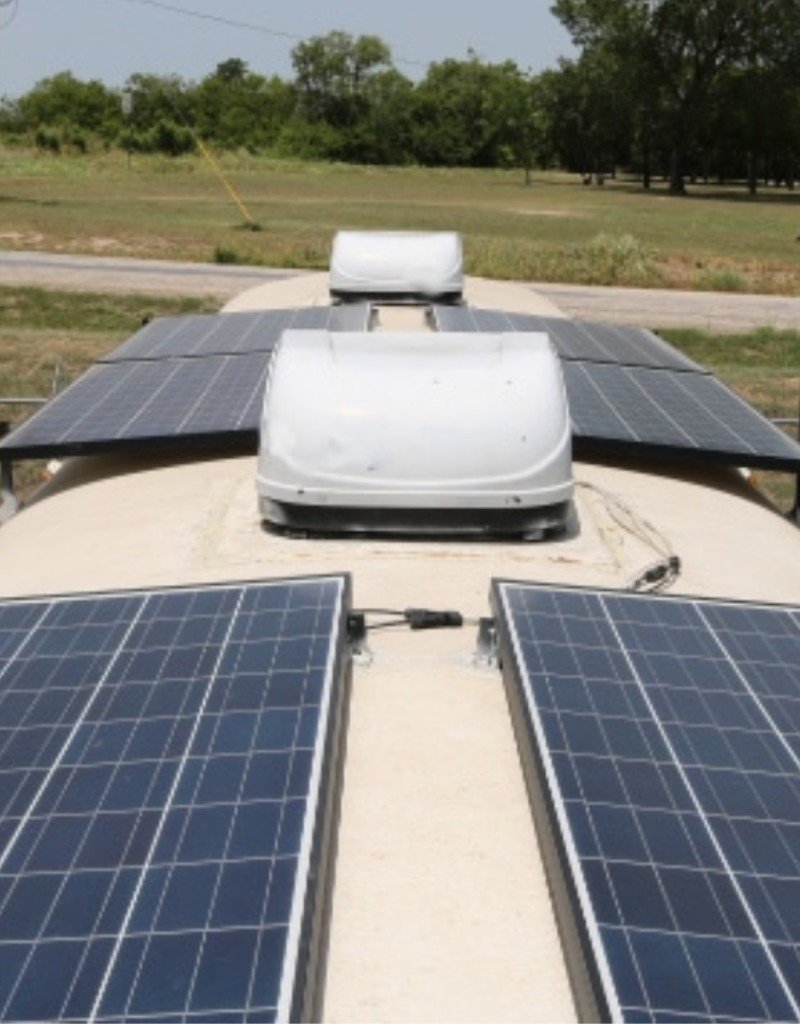
Regular RV air conditioners use 1,500-2,000 watts continuously. That’s a massive power draw that would drain any normal solar setup in 2 hours. Mini-split systems are much smarter.
A 9,000 BTU mini-split uses only 716 watts on high speed. It also cycles on and off instead of running constantly. On “auto” mode, it averages 400-500 watts over a full day. That makes solar air conditioning actually possible. What You’re Building
Massive Solar Array: Twelve 100-watt panels cost $2,400-3,000. You need every watt to keep up with A/C demand during peak sun hours. Most RVs can barely fit this many panels.
Multiple Charge Controllers: Three 40-amp MPPT controllers cost $900-1,200. Split your panels into three groups so partial shade doesn’t kill your whole system.
Huge Battery Bank: A 1,000Ah lithium system costs $4,000-5,000. This stores enough power to run A/C for 4-6 hours after sunset. Without this much storage, you’ll run generators all night.
Heavy-Duty Inverter: A 3,000-watt pure sine wave inverter costs $800-1,200. Mini-splits need clean power and surge capacity for startup.iii. Generator Partnership Required
Even 1,200 watts can’t run A/C 24/7 in extreme heat. Program your generator to auto-start when batteries hit 40%. It runs for 3-4 hours during peak heat, then solar takes over.
This hybrid approach gives you 60-70% solar operation with generator backup when you need it.
ii. Honest Reality Check
This RV air conditioning solar setup costs more than many people’s first cars. Installation is complex and requires expert electrical work. You’ll still use some generator power on the hottest days.
But if you demand climate control freedom and hate generator noise, this system delivers what others promise but can’t deliver.
Setup 7: Portable Power Station Hybrid $3,000-$5,000
You rent different RVs every summer. You don’t want to drill holes in your roof. Your landlord won’t let you modify the RV. You need solar power but want to take it with you when you switch rigs. Permanent installation isn’t an option.
This portable RV solar generator solves power problems without drilling a single hole. You set it up in 15 minutes, take it down in 10, and move it between different RVs or even use it at home. It’s solar freedom without commitment.
i. No Installation, No Problems
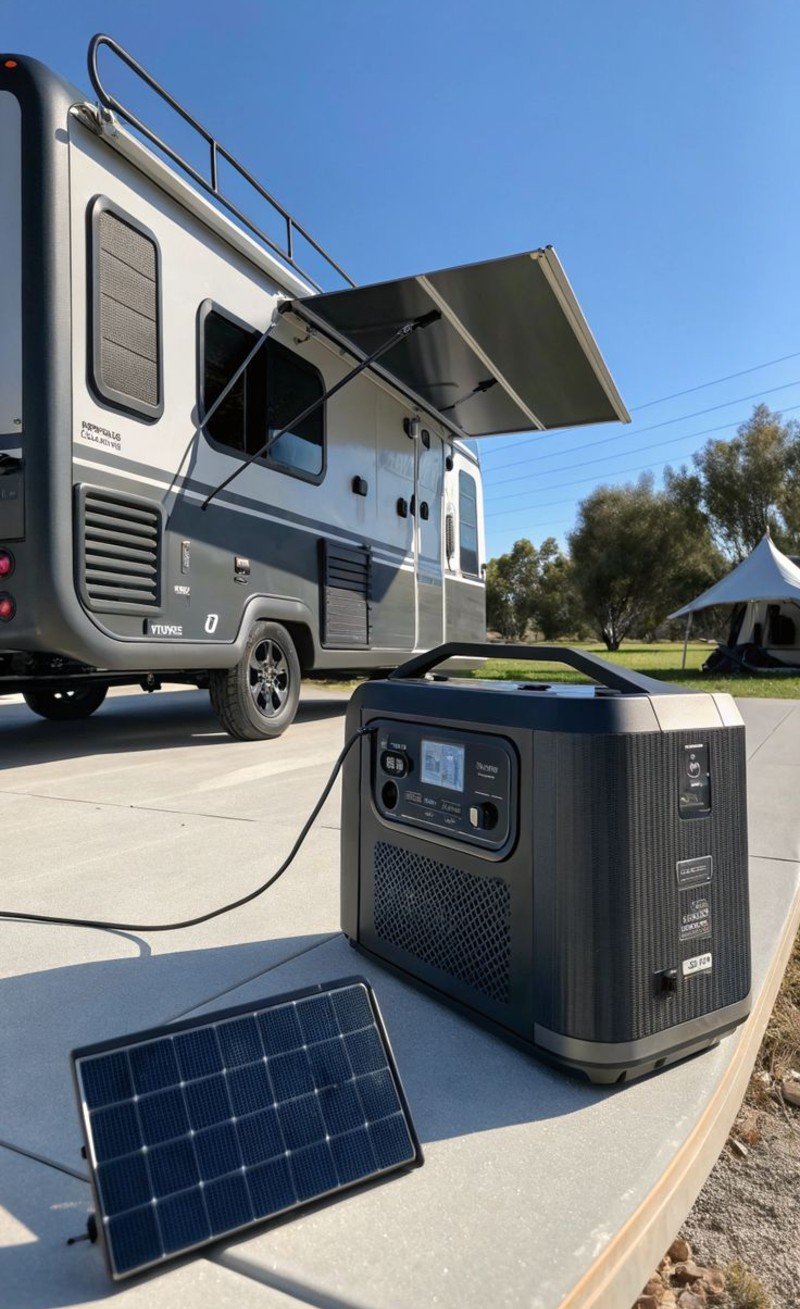
Portable power stations work like giant battery packs with solar charging. You unfold the solar panels, plug them into the power station, and start making power. No wiring, no roof mounting, no electrical permits.
The Jackery SolarSaga 100 got redesigned for 2025. It’s 20% lighter than the old version but makes the same power. The new bifacial design catches light from both sides, so you get more power even in partial shade. You’re Getting
Power Station: A 2,000Wh power station costs $1,500-2,000. That’s enough stored power for 2-3 days of normal RV use, including lights, phones, laptop work, and small appliances.
Solar Panels: Four portable 100-watt panels cost $800-1,200. They fold up like a suitcase and weigh under 30 pounds total. You can carry them yourself.
Stackable Power: Many systems let you chain multiple power stations together. Start with one and add more when you need extra capacity.
ii. Quick Setup Benefits
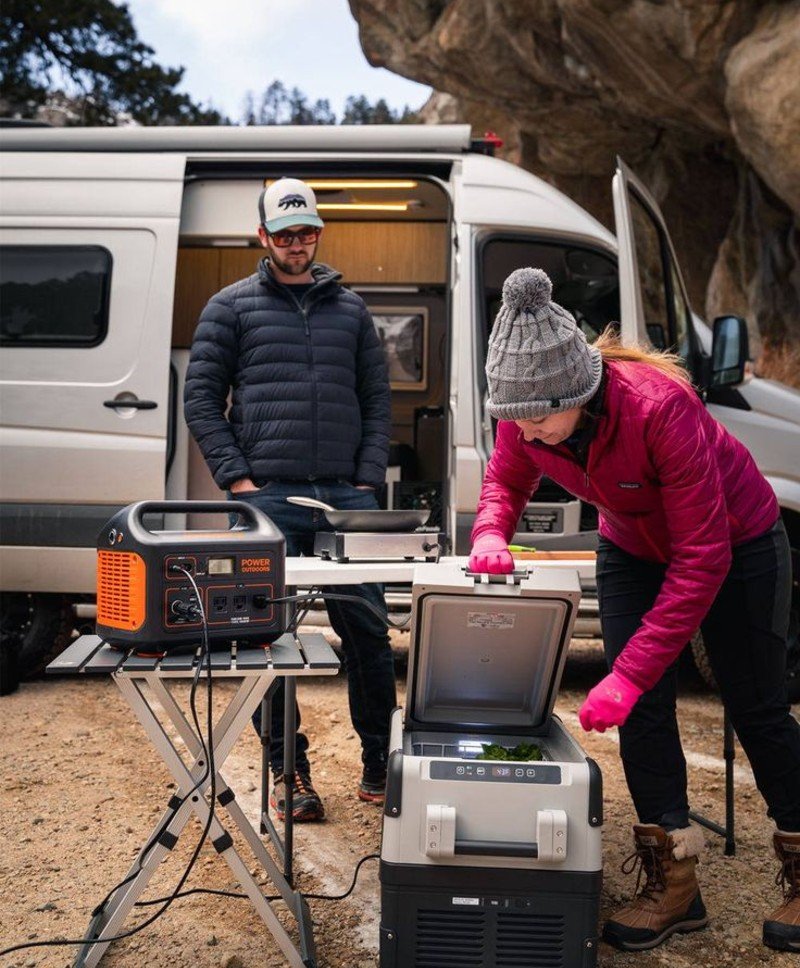
You can move your panels to follow the sun all day. Roof-mounted panels stay fixed, but portable panels get repositioned for maximum power. That means 30-40% more energy collection.
Store everything in your RV’s basement compartment. When you switch to a different RV or go home, your solar system comes with you.
iii. Real Limitations
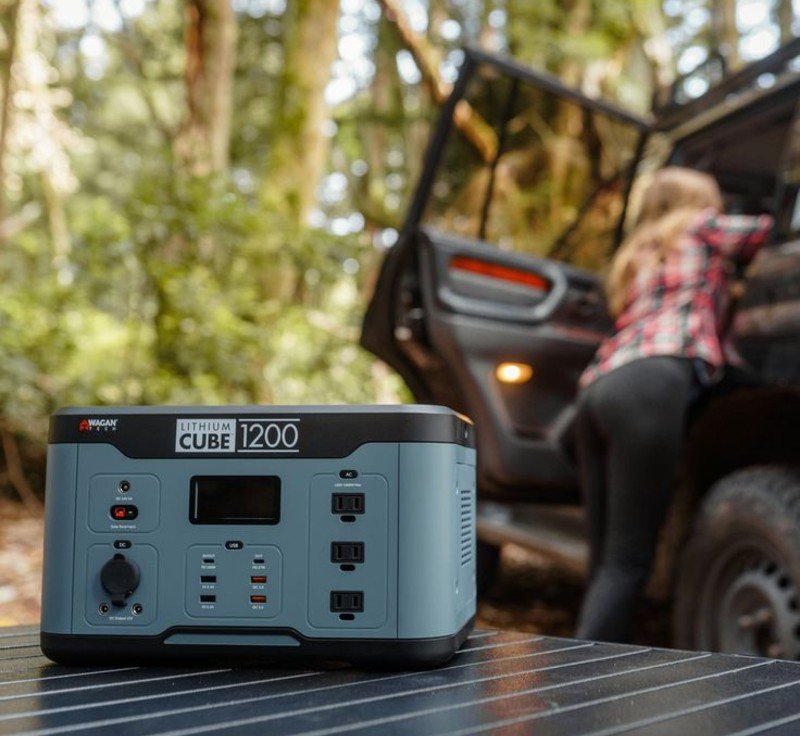
Portable systems cost more per watt than permanent installations. You pay extra for convenience and portability. You also need to set up and take down panels every time you move.
This portable RV solar generator works best if you rent RVs, switch vehicles often, or want solar power you can use at home, too. It’s honest flexibility at a premium price.
Setup 8: Tiny House on Wheels (1600W) $12,000-$18,000
You sold your house. Your RV is now your permanent home. You want to run a washing machine, a full-size refrigerator, a dishwasher, and two people working from home offices. You refuse to live like you’re camping. Your RV needs to work exactly like a real house.
This tiny house solar system gives you true home-replacement power. You can run major appliances, multiple work stations, and all the conveniences of stick-and-brick living. It’s the most expensive setup, but the only one that delivers real house-level power.
i. Power Budget for Real Living

Your 1600 watts make 6,400 watt-hours on sunny days. That handles serious power loads:
i. Washing machine (3 loads per week): 800 watt-hours per load
ii. Full-size refrigerator running 24/7: 1,200 watt-hours daily
iii. Dishwasher (once daily): 1,800 watt-hours per cycle
iv. Two laptop workstations (8 hours each): 800 watt-hours
v. Microwave, coffee maker, blender, daily use: 1,000 watt-hours
vi. All lighting, water pump, and entertainment: 800 watt-hours
This system supports the power demands of two people living and working full-time. What You’re Building
Massive Solar Array: Sixteen 100-watt panels cost $3,200-4,000. You need every inch of roof space plus maybe a ground-mount array. Most big Class A motorhomes can barely fit this many panels.
Advanced Monitoring System: A complete monitoring setup costs $800-1,200. You need to track every circuit because you’re pushing your system to its limits daily.
Huge Battery Bank: A 1,200Ah lithium system costs $4,800-6,000. This stores nearly two full days of power for cloudy weather or high-demand days.
Multiple Charge Controllers: Four 40-amp MPPT controllers cost $1,200-1,600. Split your panels into zones so maintenance or shade problems don’t kill your whole system. Smart load management is required.
Your system needs automatic priority control. When power gets low, it shuts off the dishwasher but keeps the refrigerator running. Smart controllers prevent you from accidentally draining your batteries with the washing machine. Professional design is essential.
This isn’t a kit you buy online. You need a custom electrical design for your specific RV and power needs. Professional installation costs $3,000-5,000, but it’s required for systems this complex.
Setup 9: Flexible Panel Specialty System $2,000-$4,000
Your RV has a curved roof. Maybe it’s fiberglass that can’t handle heavy panels. Standard solar setups won’t work for you.
Flexible RV solar panels solve this problem. They bend to match your roof’s curve. They weigh much less than rigid panels. And here’s why that matters: you can install them without drilling holes or adding heavy mounting hardware.
i. Perfect for Lightweight RVs
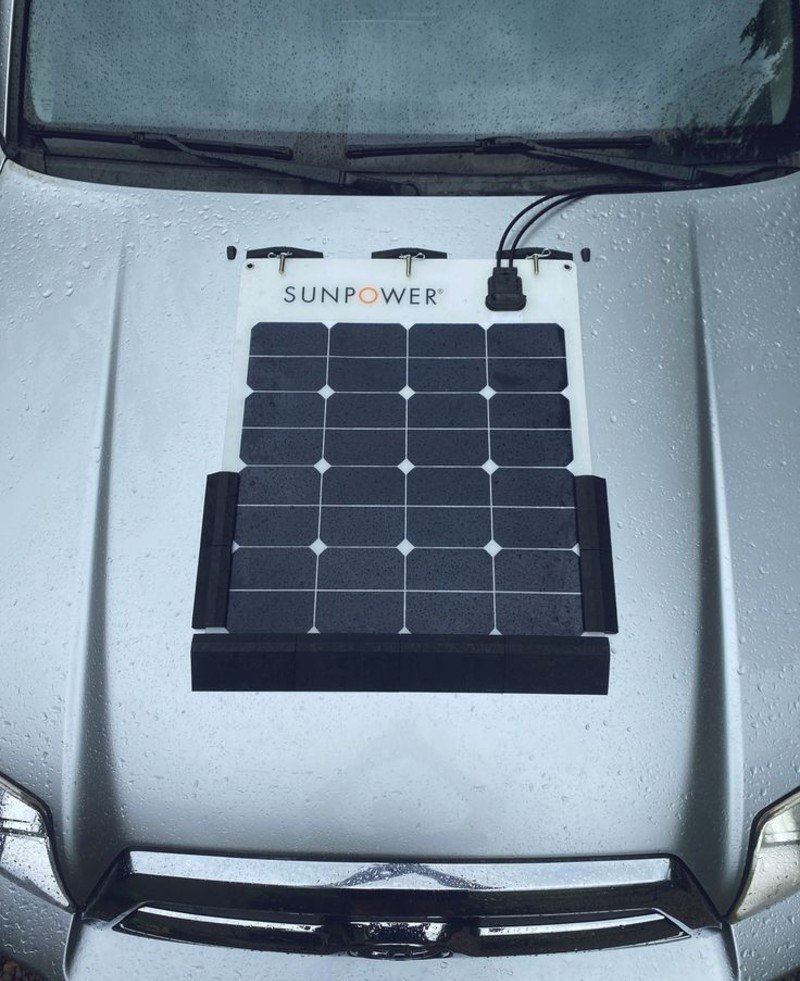
Small travel trailers and pop-up campers have weight limits. Every pound counts. Flexible panels weigh about 5 pounds each compared to 40+ pounds for rigid panels. Your RV stays within its weight rating.
These panels also work great on fiberglass roofs. Fiberglass can crack under heavy loads. Lightweight solar means no structural stress.
ii. Easy Installation Process
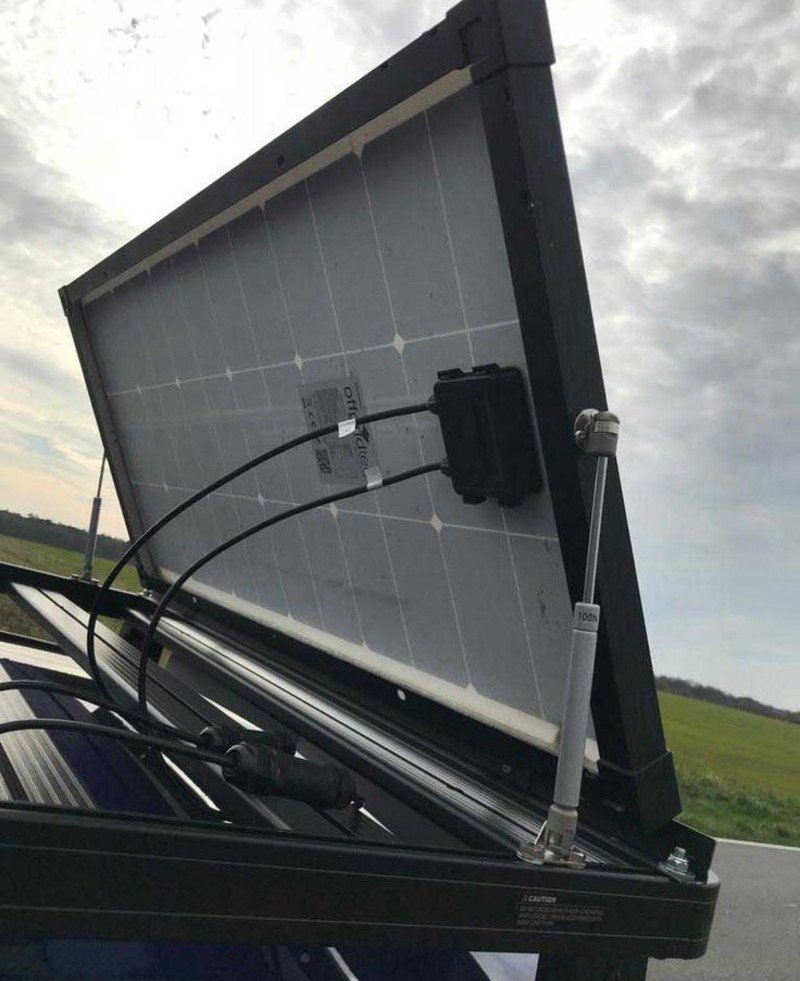
Installation is simple. Most flexible panels use adhesive backing or minimal screws. You won’t drill big holes through your roof. Less drilling means fewer leak risks.
The panels conform to curves up to 30 degrees. This makes them ideal for Airstreams and other curved-roof RVs.
iii. Top Picks for 2024-2025

The Sungold PA621 leads our recommendations. It produces 100 watts and handles tough conditions. The PA219 series offers 200-watt options for more power.
Both series have impressive certifications. They pass salt fog tests for coastal areas. Hail resistance protects against weather damage. Seismic certification means they handle road vibrations.
Setup 10: DIY Budget Build (300W) – $1,800-$2,800
Professional solar installation quotes make your wallet hurt. Labor costs often double your total project price. You’re handy with tools and want to save money.
A DIY RV solar installation cuts your costs in half. You’ll spend $1,800-$2,800 instead of $4,000-$6,000 for the same 300-watt system.
i. Maximum Cost Savings Strategy
Labor costs typically run $150-$200 per hour. A professional install takes 8-12 hours. That’s $1,200-$2,400 you keep in your pocket by doing it yourself.
You’ll buy the same quality components. The only difference is who installs them. And here’s why that matters: you learn your system inside and out.
ii. Smart Component Sourcing
Buy your panels, charge controller, and batteries separately. Avoid expensive “kits” that bundle overpriced components.
Get 300 watts using three 100-watt panels. Choose MPPT charge controllers over PWM models. They cost $50 more but produce 20% more power.
Buy batteries last. Match your battery bank size to your actual power needs, not what someone else thinks you need.
iii. Installation Overview
Start with the charge controller location. Mount it close to your batteries but away from heat sources. Run DC wiring from panels to the controller first.
Install panels using proper mounting rails. Don’t just screw them directly to your roof. Use sealant on every hole you drill.
Connect batteries last. This prevents accidental shorts while you work.
iv. Common DIY Mistakes to Avoid
Wrong wire sizes cause power loss and fire risks. Use 10 AWG wire for most RV installs. Go bigger for long runs.
Skipping fuses kills systems. Put fuses near every battery connection. They’re cheap insurance. Poor roof sealing leads to leaks. Use quality sealant and check it every six months.
v. Realistic Cost Breakdown
Panels: $600-$900 for 300 watts Charge controller: $200-$400 Batteries: $600-$1,200 Wiring and hardware: $200-$300
Total equipment: $1,600-$2,800. Add $200 for tools if you don’t own them. A good multimeter and crimping tool are essential.
DIY installation takes most people a full weekend. Go slow and double-check connections. Mistakes cost more than taking your time.
Choosing Your Perfect Setup: Decision Framework
You stare at ten different solar setups and feel lost. Which one fits your RV? Your budget? Your power needs? Wrong choices cost thousands and leave you without enough power when you need it most.
i. Calculate Your Daily Power Use

Start with math, not guessing. List every device you use and how long you run it each day. Here’s the simple formula: Device watts × Hours used = Daily watt-hours
Example: Your 90W TV runs 2 hours daily. That’s 90W × 2 hours = 180 watt-hours per day. Add up everything:
i. LED lights: 10W × 4 hours = 40 watt-hours
ii. Laptop: 65W × 3 hours = 195 watt-hours
iii. Phone charger: 20W × 1 hour = 20 watt-hours
iv. Water pump: 50W × 0.5 hours = 25 watt-hours
Your total: 460 watt-hours daily. Multiply by 1.3 for a safety margin. You need about 600 watt-hours of solar production.
ii. Roof Space Reality Check
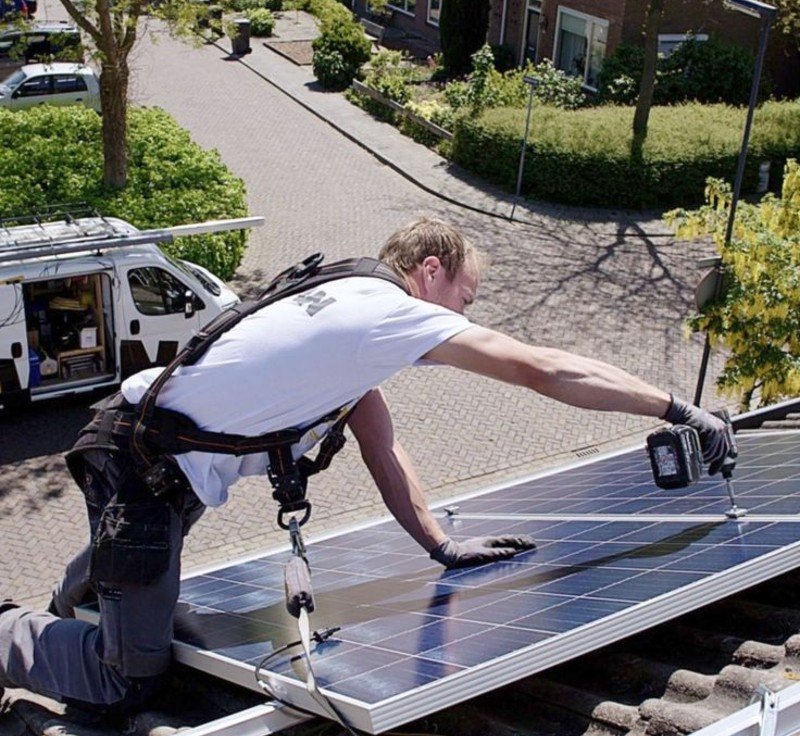
Measure your available roof space first. Standard panels need 20 square feet each. A 300-watt system needs 60 square feet of clear space.
Small RVs under 25 feet struggle to fit more than 200 watts. Class A motorhomes can handle 800+ watts easily. And here’s why that matters: you can’t install what won’t physically fit.
Check for roof obstacles. Air conditioners, vents, and antennas steal space. Work around them or choose smaller panels.
FAQs
How much solar power do I need to go completely off-grid?
Most RVers need 400-800 watts of solar panels for off-grid camping. Calculate your daily power use first. Add up all your devices and how long you run them. A typical setup might use 600-1200 watt-hours daily. You need enough solar to replace that power plus 30% extra for cloudy days.
Can solar power run my RV air conditioner?
Running AC on solar requires a massive, expensive system. A typical RV air conditioner uses 1200-1500 watts while running. You’d need 2000+ watts of solar panels and a huge battery bank costing $15,000-$25,000. Most people use solar for lights, electronics, and appliances, but rely on a generator for AC.
How much does a complete off-grid solar system cost?
Budget $3,000-$8,000 for a quality off-grid system. Basic weekend setups start around $2,000. Full-time systems with lithium batteries cost $5,000-$8,000. DIY installation saves $1,500-$3,000 in labor costs.
How long do RV solar systems last?
Good solar panels last 20-25 years with minimal power loss. Charge controllers typically last 10-15 years. Lithium batteries last 8-12 years with proper care. Lead-acid batteries need replacement every 3-5 years.

